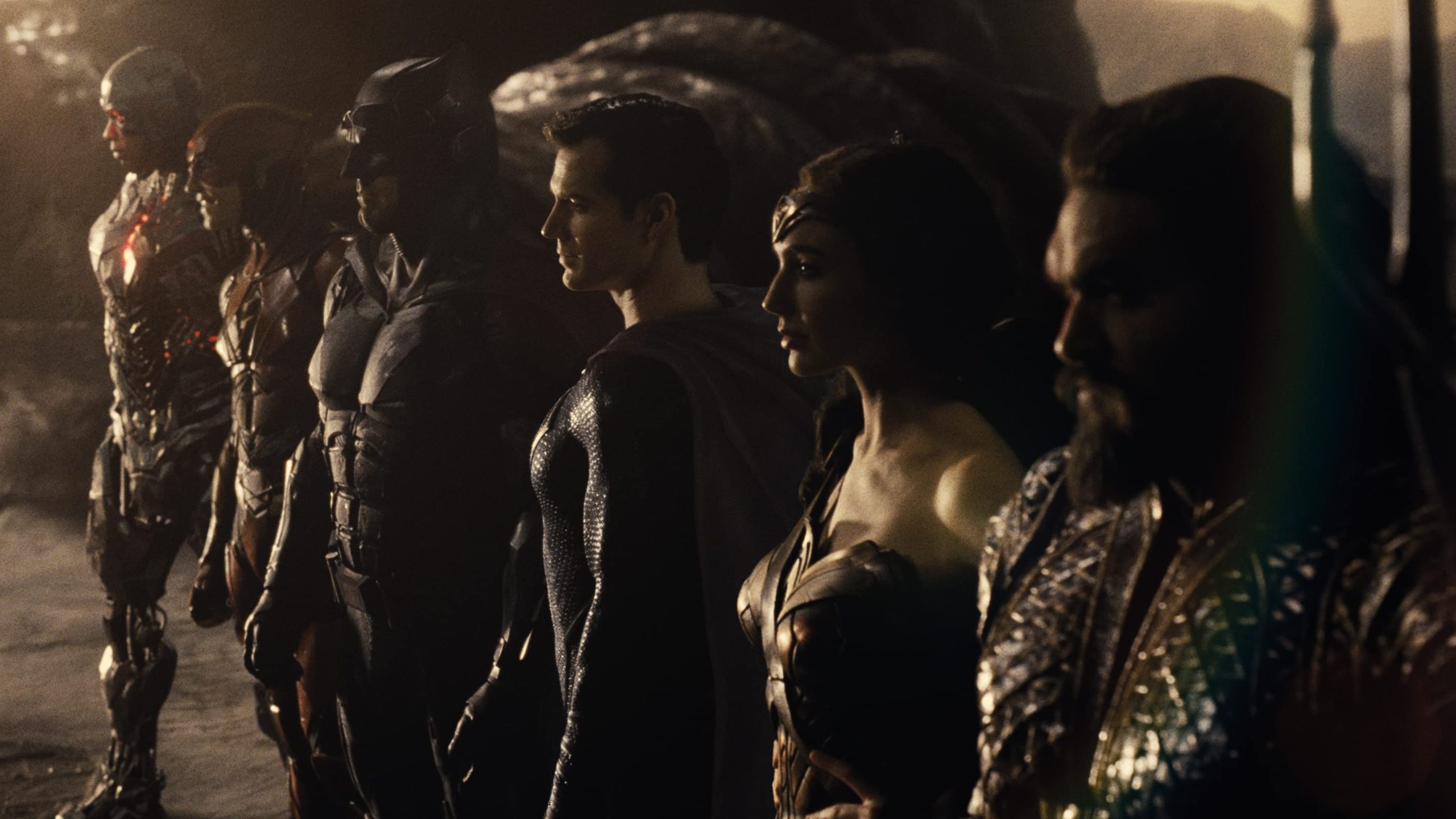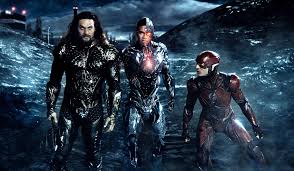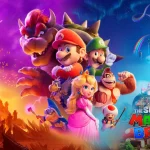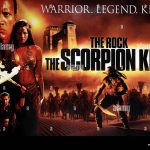Zack Snyder’s Justice League (2021)

Zack Snyder’s Justice League (2021): A Vision Realized, A Heroic Rebirth
Zack Snyder’s Justice League (2021) is not just another superhero film; it’s a grand reimagining and expansion of the 2017 Justice League movie, offering fans the full, unfiltered vision of director Zack Snyder. After his departure from the original project due to personal tragedy, Joss Whedon took over, and the result was a significantly different film from Snyder’s original vision. The 2021 release, commonly referred to as the “Snyder Cut,” presents Snyder’s intended storyline, providing a more cohesive, darker, and emotionally rich narrative that has become a landmark for comic book film lovers.
Snyder’s cut of Justice League is more than just a director’s extended version—it’s a completely reimagined cinematic experience. The movie follows the titular heroes—Batman (Ben Affleck), Wonder Woman (Gal Gadot), Aquaman (Jason Momoa), The Flash (Ezra Miller), Cyborg (Ray Fisher), and Superman (Henry Cavill)—as they join forces to prevent an impending global catastrophe orchestrated by the alien warlord Steppenwolf (Ciarán Hinds). Steppenwolf’s goal is to gather three powerful Mother Boxes, ancient and incredibly potent devices, which he intends to use to reshape Earth in the image of his homeworld, Apokolips. The heroes must come together to stop this dark force, but the journey is far more complex and emotionally charged than a mere battle of strength.
The Snyder Cut is a true director’s cut in every sense of the term. Unlike most extended editions that add a few extra scenes or lengthen existing moments, Zack Snyder’s Justice League runs for an impressive four hours, allowing for a much more detailed exploration of each hero’s backstory, motivations, and emotional struggles. This version dives deeper into the personal challenges each member of the Justice League faces, something that the original 2017 film did not have the time or space to fully address.
The Heroes’ Struggles and Growth:
One of the most significant aspects of Snyder’s cut is the amount of time dedicated to the character development of the Justice League members. Batman, played by Ben Affleck, is a far more tortured and conflicted figure in this version. The film delves into Bruce Wayne’s personal trauma and his determination to redeem himself for past mistakes, particularly the guilt he feels for not preventing the death of Superman. His obsession with uniting the heroes is born out of a deep sense of responsibility, but his path to redemption is rocky and filled with doubt. Affleck’s portrayal of Batman is brooding, complex, and adds a layer of depth to the character that was missing in the original cut.
Wonder Woman, portrayed by Gal Gadot, also receives much more screen time, allowing her to emerge as a true leader of the Justice League. Her backstory is explored in greater detail, highlighting her ancient origins as an Amazonian warrior and her ongoing struggles with balancing her warrior spirit with her desire for peace. Gadot’s performance adds emotional resonance to Diana’s character, and she is portrayed as a beacon of hope and compassion within the team.
Aquaman (Jason Momoa) is given additional backstory and development, which adds to the weight of his eventual decision to join the team. Aquaman’s internal conflict between his heritage as the heir to the throne of Atlantis and his reluctance to embrace his royal destiny is explored, making his character arc more satisfying. The expanded screen time allows Momoa to showcase Aquaman’s journey of self-discovery and his understanding of the importance of unity among the various worlds—Atlantis, the surface world, and the Justice League.
The character of Cyborg (Ray Fisher) is perhaps the most improved in Zack Snyder’s Justice League. Fisher’s portrayal of Victor Stone/Cyborg is far more emotionally complex in this version, with much more focus on his transformation into a cybernetic hero. His relationship with his father, Silas Stone (Joe Morton), is explored more deeply, adding a layer of tragedy to his character. Cyborg’s internal struggle with his new identity and the loss of his humanity is central to the film’s emotional core. His journey from a reluctant hero to a key member of the Justice League feels earned and meaningful in the Snyder Cut.
The Flash (Ezra Miller), while still providing some comic relief, is given more development in this version. His backstory is explored, revealing his struggles with the death of his mother and his strained relationship with his father, who is imprisoned for a crime he did not commit. The Flash’s unique abilities and his role in the team are also better highlighted, particularly in his pivotal moments during the final battle against Steppenwolf. Miller brings a sense of innocence and enthusiasm to Barry Allen, but also a deep sense of responsibility as he grapples with his powers.
Superman’s (Henry Cavill) resurrection and return to the team is another crucial element that is expanded in Snyder’s version. The emotional weight of Clark Kent’s return to life is given more depth, and the film explores his struggle to find balance between his Kryptonian heritage and his Earthly upbringing. Cavill’s portrayal is more nuanced in the Snyder Cut, emphasizing Superman’s internal conflict and the responsibility he feels to be a symbol of hope for the world. His reunion with Lois Lane (Amy Adams) and his journey to becoming the symbol of truth and justice are beautifully portrayed, offering a satisfying conclusion to his arc.
Steppenwolf and Darkseid: The Threats to Earth
Steppenwolf, voiced by Ciarán Hinds, is given a much more developed backstory in the Snyder Cut, with motivations that go beyond the simple desire for power. His quest to unite the Mother Boxes is tied to his longing for approval from Darkseid (Ray Porter), the godlike ruler of Apokolips. Steppenwolf’s character is portrayed as a fallen general desperate to redeem himself in the eyes of his master, making his quest for domination more tragic and compelling. The addition of Darkseid, who serves as the ultimate villain and a looming threat for future films, sets up a larger, more epic conflict that promises to play out in future DC Universe films.
Visuals and Action: A Superhero Film on a Grand Scale
One of the most praised aspects of Zack Snyder’s Justice League is its epic visual scale. The film’s action sequences are intense, with high-octane battle scenes that fully showcase the power and abilities of the Justice League members. The underwater battles involving Aquaman, the massive fight against Steppenwolf and his parademons, and the dramatic final confrontation are all enhanced by Snyder’s trademark visual style. The use of slow motion, detailed cinematography, and striking color palettes adds a sense of grandeur and weight to each scene, creating a visually stunning spectacle.
The visual effects in Zack Snyder’s Justice League are also significantly improved, with the film’s darker tone complementing the gritty and realistic CGI. The effects help to bring the action to life, but they also serve the story, ensuring that the stakes feel real and urgent. The sequences involving the Mother Boxes and the powers of the Justice League are jaw-dropping, giving fans the spectacle they’ve long hoped for while also serving to drive the narrative forward.
A More Mature and Cohesive Narrative
Snyder’s version of Justice League is a darker, more mature take on the superhero genre. The film’s tone is far more serious, with a focus on the emotional and psychological journeys of its characters. The themes of unity, sacrifice, and redemption run through the narrative, adding depth to what might have otherwise been a straightforward action film. This is a Justice League movie that treats its heroes as deeply human, flawed individuals who must overcome their personal struggles in order to unite and defeat a common threat.
The film is also more cohesive in its storytelling. The character arcs are more developed, and the relationships between the heroes are explored with greater care. Rather than rushing through key moments, Snyder allows the story to unfold naturally, giving each character the time they need to evolve and contribute to the team. This results in a much more satisfying and emotionally rewarding experience for audiences.
Conclusion: A Landmark in Superhero Cinema
Zack Snyder’s Justice League (2021) is more than just a director’s cut—it is a reimagining of a story that had been marred by behind-the-scenes struggles. With its expanded runtime, deeper character exploration, and epic visual effects, the Snyder Cut stands as a monumental achievement in superhero cinema. It offers fans a darker, more mature, and more cohesive narrative that stays true to the essence of the characters while delivering a visually stunning and action-packed adventure.
The film is a triumph for Zack Snyder, whose vision for the Justice League finally comes to life in full. It also serves as a fitting tribute to the characters, showing their humanity and their ability to come together in the face of overwhelming odds. For DC fans, Zack Snyder’s Justice League is an epic, must-watch conclusion to the saga of the Justice League, setting the stage for the future of the DC Universe.










